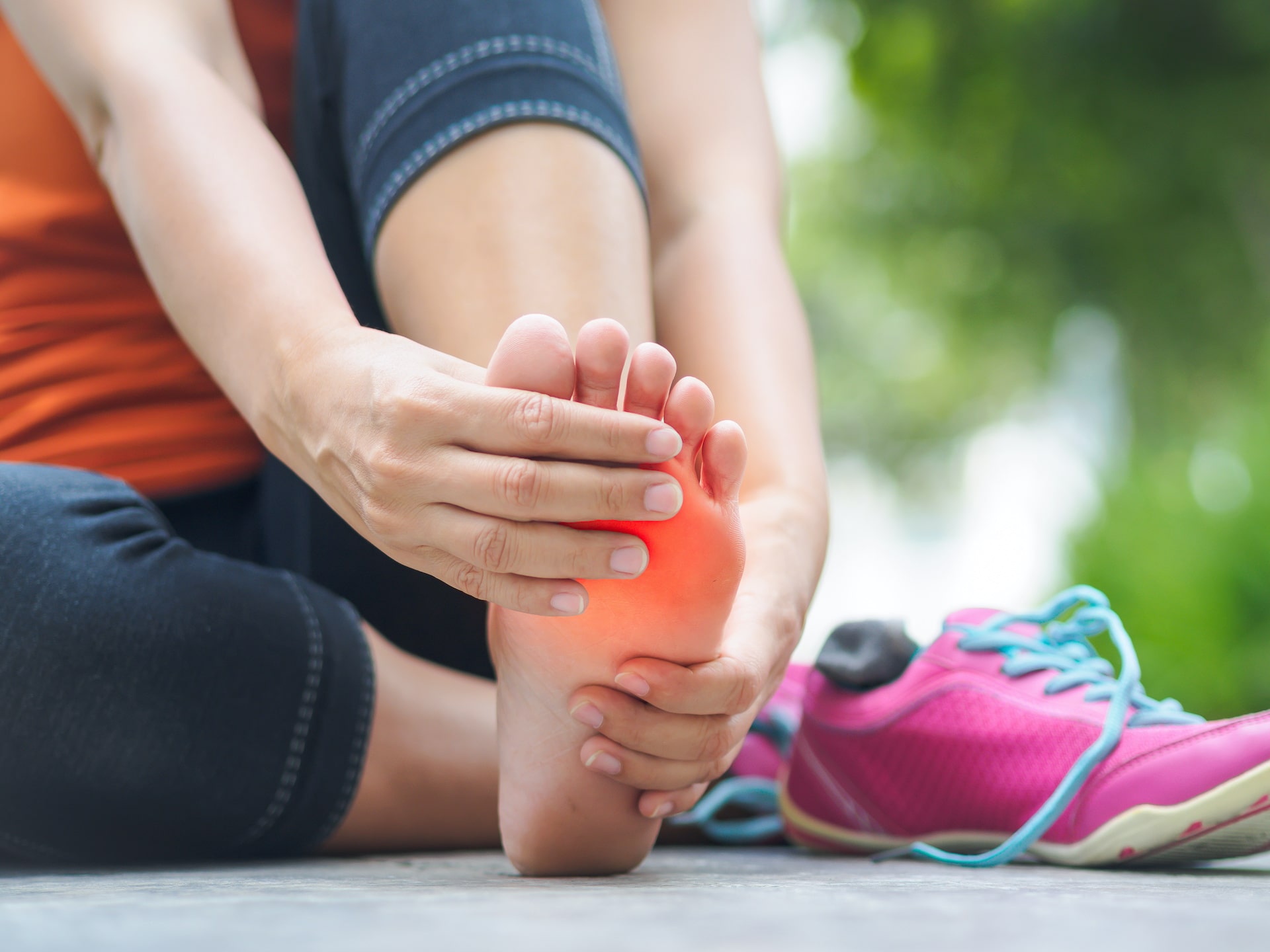Causes of adult acquired flatfoot deformity
Flatfoot that develops in adulthood is called adult acquired flatfoot deformity (AAFD), and may result from either developmental or acquired causes. Regardless, those with flatfoot deformities typically have a fallen arch causing the foot to appear as if its collapsing inward with the foot pointed outward.
Developmental causes of AAFD include abnormal joint development, loose ligaments, or tarsal coalition (when two or more bones of the foot are joined together).
Acquired causes of flatfoot deformities are those that occur due to non-developmental causes. Common acquired causes include dysfunction of tendons in the foot and lower leg (most commonly the posterior tibial tendon), a ruptured plantar fascia (the membrane running along the bottom of the foot), the talus (the ankle bone) slipping out of alignment, or trauma to the foot or ankle. However, flatfoot may also occur as a result of neuromuscular imbalances due to a stroke, closed head injury, polio, or cerebral palsy.
Abnormally tight calf muscles have also been implicated in the development of flatfoot deformities and may be either due to developmental or acquired causes. Abnormally tight calf muscles may pull on the Achilles tendon, causing the foot to flatten abnormally.
Treatment of flatfoot deformities
Although there are some patients who will benefit from surgical intervention for their flatfoot deformity, most patients respond well to more conservative treatment options. As a first line of treatment, patients may be instructed to use night splints either for a few hours per night, or in more severe cases to sleep with night splints on. Strategic strapping or taping may also be called for. Many patients also respond well to R.I.C.E. — Rest, Ice, Compression, and Elevation.
In more severe cases for those who don’t respond to night splinting, strapping or taping, or R.I.C.E, a CAM (controlled ankle motion) walker or shoe may be called for, or a below-the-knee hard cast or boot. Typically these are used for between four to six weeks, but in some cases, it may take longer for symptoms to improve.
Nearly all patients who have a flatfoot deformity can benefit from orthotics. Orthotics are custom-made inserts that can be worn in shoes to correct a variety of foot and gait abnormalities. In those with AAFD, orthotics are designed to control excess pronation, or rolling of the foot inward. These orthotics typically have a deep heel cup with extra padding at the forefoot and are semi-rigid to help control motion and provide stability. If the patient is likely to pronate over the edge of the orthotic, a high medial flange may also be included.
If you suspect that you have a flatfoot deformity or have suffered a foot injury recently, be sure to call Kansas City Foot Specialists today at (913) 338-4440 to schedule an appointment with one of our podiatrists. We are here to address any number of conditions and concerns and to help you keep your feet healthy and fit. We look forward to seeing you soon!
Source:
http://www.podiatrytoday.com/key-insights-conservative-care-adult-flatfoot



